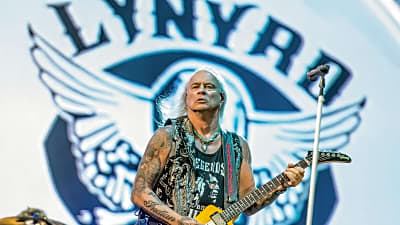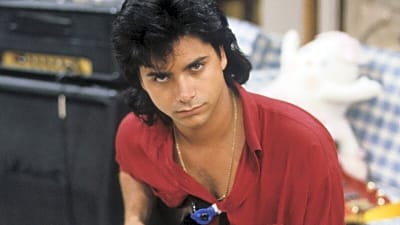
Thirty years later, "Do the Right Thing" still burns
The vast majority of Spike Lee’s Bedford-Stuyvesant-set “Do the Right Thing” is a vibrant thing. As designed by the expert crew of Wynn Thomas (production), Steve Rosse (sets), Ruth E. Carter (costumes), Skip Lievsay (sound) and Ernest K. Dickerson (cinematography), it’s an intentionally prettified tableau: you can’t smell the days-old trash baking on the concrete or hear the constant blare of car horns throwing an intermittently discordant wrench into the multitude of melodies blasting out of stereos up and down the block. There are no rats, no drug dealers working the corner and no pop-pops of dubious origin emanating from god-knows-where. This isn’t Italian neorealism. This is Hollywood. It’s Elmer Rice’s “Street Scene” by way of Vincente Minnelli. It’s a glorious place to visit for ninety minutes and then, in the closing fifteen, get your heart absolutely shredded.
Thirty years after its May 19 debut at the 1989 Cannes Film Festival, “Do the Right Thing” is considered the definitive motion picture about race relations in the United States. This is a well-earned distinction, but it’s a bit too broadly applied: Lee’s film is specifically about race relations in an urban environment, where you encounter people of different colors and ethnicities all day long, and often pass through places where white people are in the minority — if they’re represented at all. There’s an inescapable tension, especially when poor neighborhoods get gentrified, forcing families who’ve spent generations in one apartment to relocate to another part of town. Lee hints at this ever encroaching change with the bicycle-lugging Clifton (John Savage), who accidentally scuffs Buggin Out’s (Giancarlo Esposito’s) pristine Air Jordans. Even though Clifton was “born in Brooklyn”, the inference/threat is clear, and the current residents don’t like it one bit (his Larry Bird jersey certainly doesn’t help).
The primary focus of Lee’s film is on the uneasy détente between Sal (Danny Aiello) and the community that, as he likes to boast, grew up on his food. Viewers who know nothing of this world or the deep-seated frustrations of residents like ML (Paul Benjamin) — who, when he's not presciently warning about the melting of the polar ice caps, laments the presence of Korean grocers opening up shop in his neighborhood — quickly side with Sal. They see a hard-working small businessman who takes pride in feeding his long-time customers; they don’t see the successful businessman who flaunts his Italian-American heritage via his “Wall of Fame” over his African-American clientele, even though the memory of Michael Griffith’s murder in Crown Heights is still fresh. Yes, Buggin Out’s a troublemaker (he’s making trouble) when he objects to the photographs of Sinatra and so forth in the pizzeria, but Sal needlessly escalates the situation with a racially charged riposte. Decades-old resentments are bubbling up here. As Mookie (Lee) tries to remove Buggin Out from the establishment, Smiley (Roger Guinevere Smith), the mentally disabled peddler of a photograph depicting Martin Luther King Jr. and Malcolm X shaking hands, is pounding on the window in the background. It’s getting hot. By nightfall, Sal’s will be engulfed in flames.
Do you have to know this milieu to feel that heat? You shouldn’t, but, in my experience, this scene has always been where most white audiences — especially of the non-urban variety — throw in with Sal. They can't make the empathetic leap. Mookie is “lazy” (he’s just a kid who doesn’t want to go to work). Buggin Out is a “reverse racist” (he’s a knucklehead). Radio Raheem is… yeah (he’s a young militant). The argument against “Do the Right Thing” at the time was that Lee sanitized the crime-ridden Bed-Stuy; in retrospect, he might’ve been too much of a humanist. He trusted people to warm to the neighborhood and wrestle with the disputes therein; instead, they sought out rooting interests. Alas, one side shrugged the whole dilemma off and said, “Let ‘em burn”.
Now the world is on fire. All of those hatreds, all of that history, all of these attempts to share experiences of poverty and hopelessness and humanity via the moving image (not just from Lee, but filmmakers like Jean Renoir, Vittorio De Sica, and Satyajit Ray) — all of this art people of conscience created to warn us and bring us together, it feels like none of it connected. We are divided. Too many of us are proudly ignorant, and that same segment is proudly hateful. Spike Lee’s last film, “BlacKkKlansman", closed with footage of the 2017 Charlottesville protest, then rolled credits over an upside down American flag soundtracked by Prince’s spare rendition of “Mary, Don’t You Weep”. It lost the Best Picture Oscar to “Green Book”. Bedford-Stuyvesant is significantly gentrified. The polar ice caps continue to melt.
Fight the power.
More must-reads:
Breaking News
Trending in Entertainment
Customize Your Newsletter
 +
+
Get the latest news and rumors, customized to your favorite sports and teams. Emailed daily. Always free!







